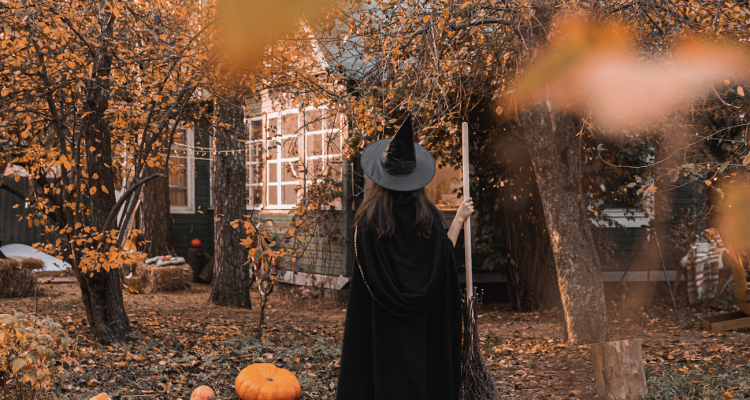From Roald Dahl’s firsthand account of their meetings to Hollywood’s fantastical representation of them in film, witches have always been a source of fascination for the masses in pop culture. Warts, green faces and shabby broomsticks are all characteristics we conjure up in our minds about these frightful women, but have we paused to wonder where this modern day folklore came from? With Halloween just around the corner, we here at The Mirror consider it our duty to set the record straight on the coven and their dark ways of black cauldrons and mystifying potions.
Witchcraft, in the most basic sense, refers to the practice of magic and the conjuring of spells and spirits to grant wishes, according to History.com. Women who did not fit the typical mold of wife and mother at the time were regarded with caution and curiosity. Many of them dispensed wisdom that was supernatural and difficult for the common folk to understand.
Witchcraft came into full swing of the public eye in Europe during the 15th century, when both the Catholic and Protestant churches began their crackdown on the supernatural. This fervor was further intensified with the publication of the book “Malleus Maleficarum,” translated to “The Hammer of Witches.” It was written in 1487 by a German monk named Heinrich Kreimer, who argued heresy was all around and being spread by witches, who were mistresses of the devil and in cahoots with him to bring sorrow and evil to the Christian land (History.com).
Kreimer’s book was meant to be a guide on how to identify and investigate witches. It became the equivalent to a modern day bestseller in Europe. Clergymen, officials and ordinary people flocked to this book and were instantaneously made aware of the methods the devil used to bring ruin into their communities. In it, Kreimer strongly condones the use of violence and torture in order to force a confession out of suspected witches. It is estimated that between 1500 and the mid-1600s, about 60,000 to 100,000 people were executed due to suspicion of witchcraft.
The 1692 Salem Witch Trials in Salem, Mass. are the most famous examples of witchcraft in colonial America. 19 suspected witches were hung in Salem after going through lengthy trials where young girls accused their neighbors of cooperation with the devil. Those court scenes were famous for girls throwing themselves across the floor when the accused woman pointed a finger in their direction. They had uncontrollable fits, claiming they were under the influence of the accused. The hysteria swept the small Puritan colony, where in their homogeneity, anyone who did not conform with their clothing, manner of life or other societal norms was open to suspicion.
Connecticut, not to be overshadowed by the northern colony, participated in the witch trial fever as well. In 1650, Connecticut declared witchcraft to be one in a slew of capital offenses, alongside blasphemy and murder. Alse Young of Wethersfield, Conn. was the first person in the Constitution State to be executed in 1647, in Hartford. She was one of 11 in Connecticut who were executed for the crime, per the CT State Library. Just as a panic spread through Salem, it spread here in our very own town of Fairfield in 1692.
However, no executions resulted from this panic. By 1662, the requirements needed to secure an execution upon an accused witch became more finely tuned; more proof was needed than just the single testimony of a witness, as was the case before. For the most part, after the Fairfield panic, witchcraft persecutions dwindled and the hysteria died down.
So, how did a wave of misunderstood genocide turn into a casual Halloween costume for children, a centerpiece for seasonal decoration and an icon in the “Wizard of Oz”? As seen above, the witches of history did not dress in outlandish costumes, but were rather cloaked in the regular outfits of the day. So, the answer is: interpretation.
In 1812, the Brothers Grimm took the loose interpretation of a witch in “Hansel and Gretel” as being an old lonely woman, with a ringing cackle, who lured children into her unsuspecting candy house in the middle of the woods with the conscious intention of cooking and eating them. In 1900, L. Frank Baum gave his readers (and subsequent cinema viewers) two contrasting versions. The witches of the east and west were evil—namely the Wicked Witch of the East, who gets crushed under Dorothy’s house, and the Wicked Witch of the West, with her deteriorating, dry green skin, dressed in full black and a pointy hat. Glinda, on the other hand, is the good witch, from the south, and is presented as an angelic figure appearing to Dorothy in her times of need. She has no unorthodox facial coloring and is dressed in a shining dress–more like a fairy than a witch. In 1983, Roald Dahl presented to us a world in which there were conferences of witches, plotting the demise and destruction of children all over the world.
In the end, when we see kids dressed in black gowns and pointy hats running through the streets on the night of Oct. 31, let’s think of the long, drawn out, centuries-long history of witches and how we came from tricks to treats.


Leave a Reply